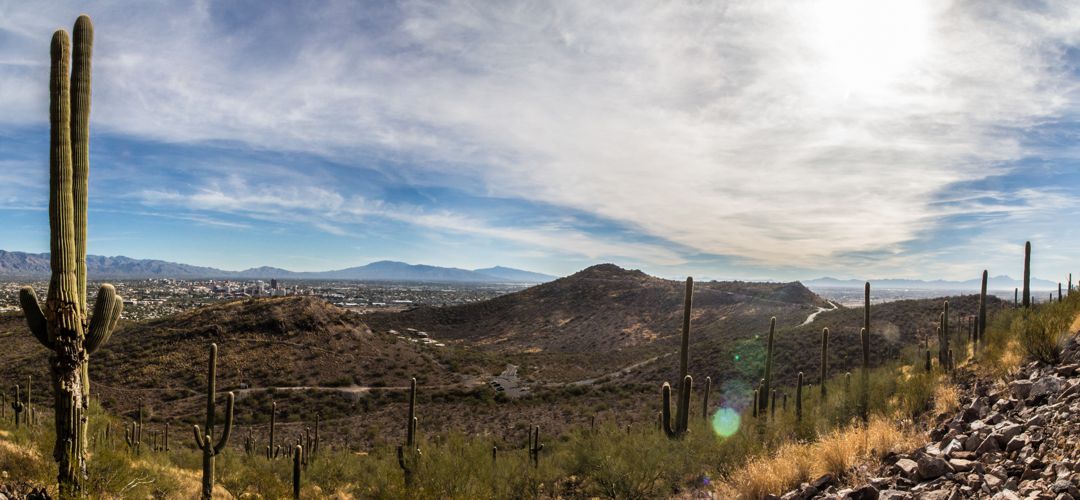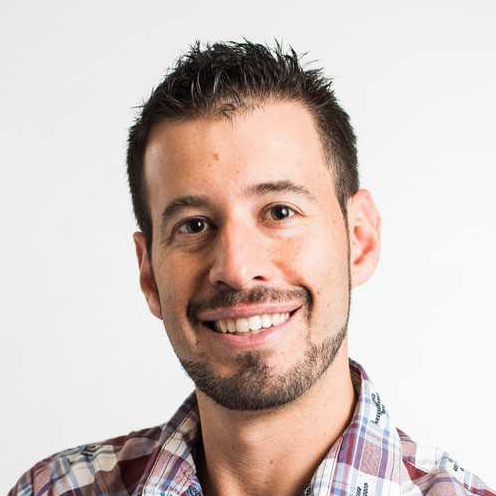
 Impact Earth: A Roadmap to Resilience, Episode 4, The Desert Laboratory (located on Tumamoc Hill, Cemamagi Du’ag, Horned Lizard Mountain, a volcanic hill of prominent cultural and sacred significance to the Tohono O’odham, including the San Xavier Wa:k District, and other Native nations) was founded in 1903 by the Carnegie Institution, which has repeatedly been at the center and forefront of desert research. The role of the Desert Laboratory is to build on the complementary strengths of culture, science, and community rooted at Tumamoc Hill and the larger Sonoran Desert to become an integrative hub of novel research, education, and outreach about how linked human and natural systems face the future of life in the desert.Thanks to Nicci Radhe for the beautiful photo.
Impact Earth: A Roadmap to Resilience, Episode 4, The Desert Laboratory (located on Tumamoc Hill, Cemamagi Du’ag, Horned Lizard Mountain, a volcanic hill of prominent cultural and sacred significance to the Tohono O’odham, including the San Xavier Wa:k District, and other Native nations) was founded in 1903 by the Carnegie Institution, which has repeatedly been at the center and forefront of desert research. The role of the Desert Laboratory is to build on the complementary strengths of culture, science, and community rooted at Tumamoc Hill and the larger Sonoran Desert to become an integrative hub of novel research, education, and outreach about how linked human and natural systems face the future of life in the desert.Thanks to Nicci Radhe for the beautiful photo.
This episode made possible by the generous support of Arizona Institutes for Resilience
Get More Mrs. Green’s World
Sign up for our newsletter: https://bit.ly/mgwnews-signup
Power the Movement on Patreon: https://bit.ly/2DvKnxT
Be Social with Us:
Facebook: https://bit.ly/2KWLIOH
Twitter: https://bit.ly/3fldZfK
Instagram: https://bit.ly/3fmHIVo
LinkedIn: https://bit.ly/2EMtCz3
SUPPORT THE CREATION OF PODCASTS LIKE THIS ONE: BECOME A MEMBER TODAY!
INSIGHTS
- More about Dr. Ben Wilder: Ben’s research is broadly focused in desert ecology and botany. He utilizes multiple approaches and time scales to establish baselines to better understand modern biodiversity and connect science to conservation. Ben has been the Director of the Desert Laboratory on Tumamoc Hill since October 2016 and is also Interim Director of CAZMEX, the Consortium for Arizona-Mexico Arid Environments.
- Tumamoc is very much on purpose and relevant…why? In so many ways it is the heart of our region and the city of Tucson, Arizona. Ben takes us on a journey to understand why on this podcast.
- What are scientists learning from Tumamoc from the past and the Indigenous peoples that called that area home? Tumamoc is a cultural landscape and historically there has been a separation between science and the culture. Where we are going through Ben’s leadership is reconnecting science and culture to understand the world around us and light a new path for the future.
- What is happening to the desert life in the southwest right now – particularly to the majestic saguaros? Ben provides important insights into what is happening in the desert today due to the lack of monsoons in the region.
- What is the role of art in bringing forth the work of science? How is art currently helping to tell the story of Tumamoc and the story of those that are engaged with the region? Learn more about Benjamin M Johnson mentioned by Ben Wilder during this podcast.
- The big question is “what is this region that we now know as the Sonoran desert?” – this question was initially asked around the 1930s and there are still fundamental questions that remain. Ben walks us through the science that is happening today known as geogenomics.
- The future of the Desert Laboratory, with the support of AIR, is very bright. Ben shares the vision for the future of one of the most “anthropologically, ecologically, gastronomically and culturally important places in Tucson and beyond”.
GET INFORMED!
- Arizona Institutes for Resilience: Solutions for the Environment and Society (AIR) coordinates interdisciplinary groups of faculty, students and projects across the University of Arizona’s campus, from climate science to public policy, law, the arts, water resources and beyond. Led by Professor Jim Buizer, AIR explores and develops solutions with campus and community partners that will serve human and natural communities across the globe. Further, as part of the UArizona Office of Research Innovation & Impact, led by Senior Vice President of Research, Dr. Betsy Cantwell, AIR builds a robust web of environmental connections across colleges and departments that collectively make up Arizona Environment. AIR includes many centers, institutes, and programs that work together to build a “Roadmap to Resilience,” drawing on the expertise of many colleges and departments to promote partnerships and interdisciplinary activities. Looking to the future, AIR will help individuals, businesses and communities manage risk and find opportunities associated with solving the climate crisis. AIR focuses on solutions that engage a full array of disciplines, professional schools, international capacity, and entrepreneurial opportunities. The AIR themes that form the cross-campus Arizona Environment structure encourage solution-focused research in topics such as climate science, adaptation and resilience solutions; national security and the environment; data, informatics and modeling; biodiversity, conservation and ecosystems; and many more.
- Engage with AIR on Facebook, Twitter and Instagram – they look forward to connecting with you!
- Learn more about The Desert Laboratory on Tumamoc Hill
EPISODES FROM THIS SERIES
- Episode 1: A Roadmap to Resilience: The Vision
- Episode 2: The Navajo Nation and Clean Water: The Story of Two Sisters
- Episode 3: The Power of Waste: Let’s Talk Poop!
- Episode 5: University Climate Change Coalition: Collaborative Climate Action
- Episode 6: Rise of Resilience: Meeting the Triple Threat of Our Time
- Episode 7: Climate Change and the Economy: The Price of Carbon
- Episode 8: Food Systems: Pandemics, Equity and the Future
- Episode 9: It is Getting Hot in Here – Building Resilience to Address Extreme Heat
- Episode 10: Taking Action and Building Resiliency: The Power of Art
- Episode 11: Building Resilient Environmental Health